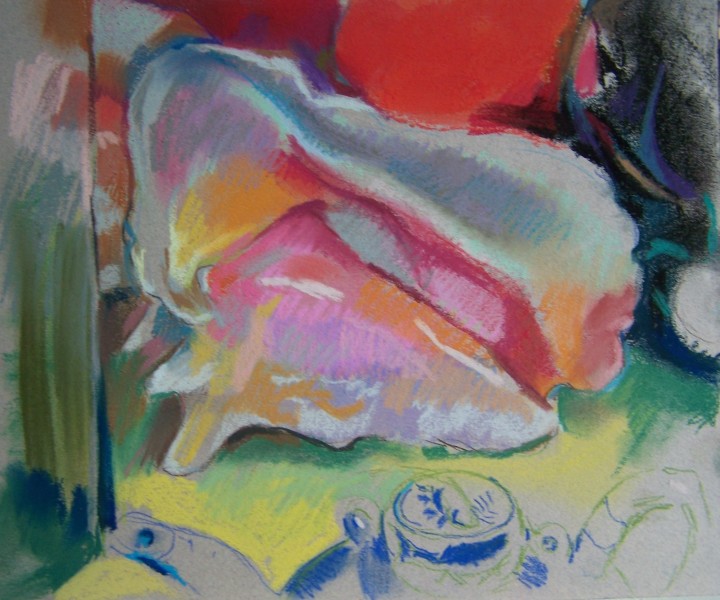When you paint as much blue as I do

sometimes you need some yellow and orange. The koi pictures that feature so prominently in my life and studio make one need strong warm colors from time to time as a foil to the watery blue reflections of sky that dominate those works. Since I have an ancient squash that’s been sitting on the kitchen shelf for longer than I’m willing to admit, and as I don’t think I’m interested in cooking it anymore, I decided that it’s perfectly suited to the still life table where it sits very nicely.

I painted it with watercolor in the picture on top, and afterwards decided to have a go at it with oil paint too. For the oils I paired it with one of the sea shells.
The light comes in from the window facing south at the backyard and also from an east facing window that bounces light from the neighbor’s light colored house, filtered through the leaves of shrubs I need to prune. I have a bright yellow plastic table cloth that I bought for a dollar at the grocery store, purchased for its brilliant color and assembled together the items and ambient light all make for much bright yellow wending warmth.
So, there they are — today’s immersions in a foil to blue. The balance of the color reproduction is off. The pictures are cooler and more lemon shaded (especially in the cloth) than gets captured here. But I learned long ago that the camera sees things a little differently than our eyes do. And the reproduction catches the general sense, and hence is as we say “close enough for jazz.”














